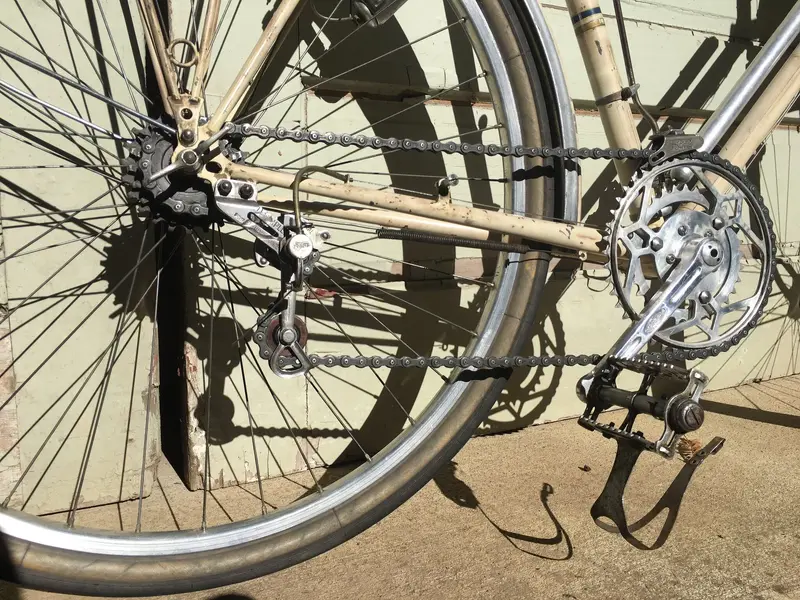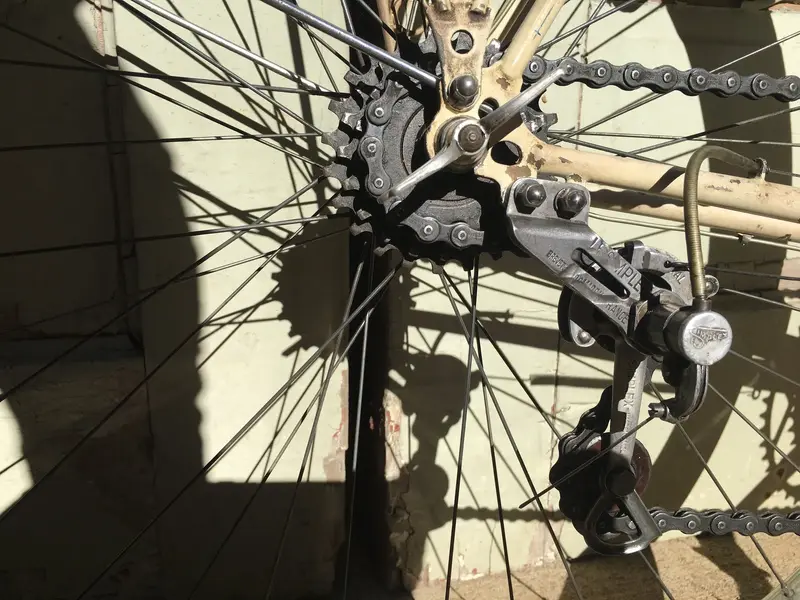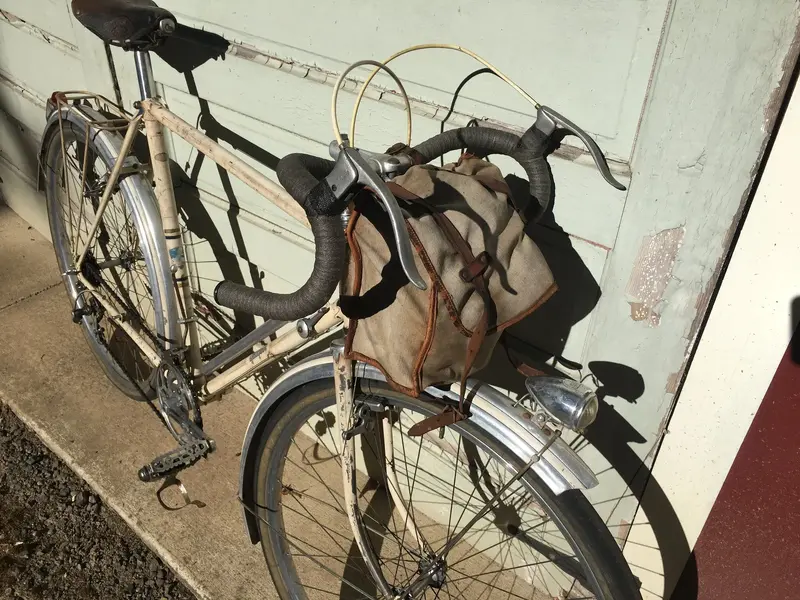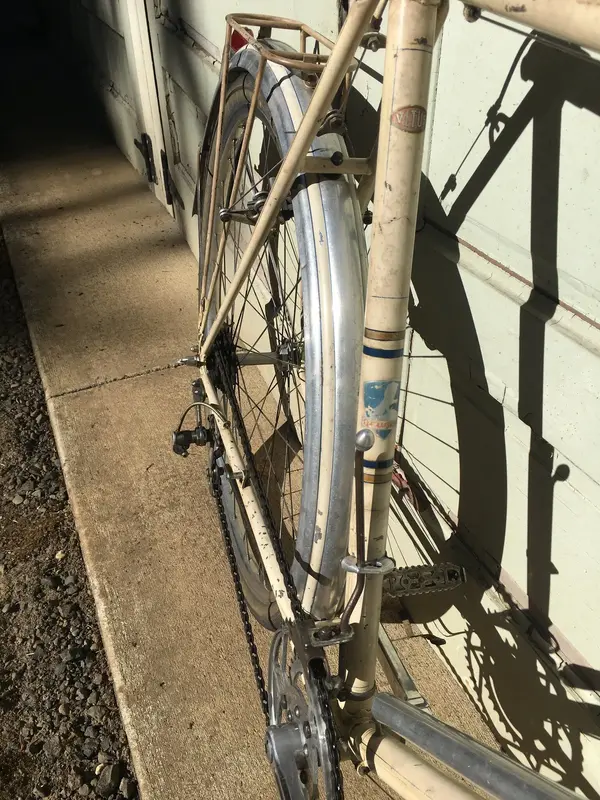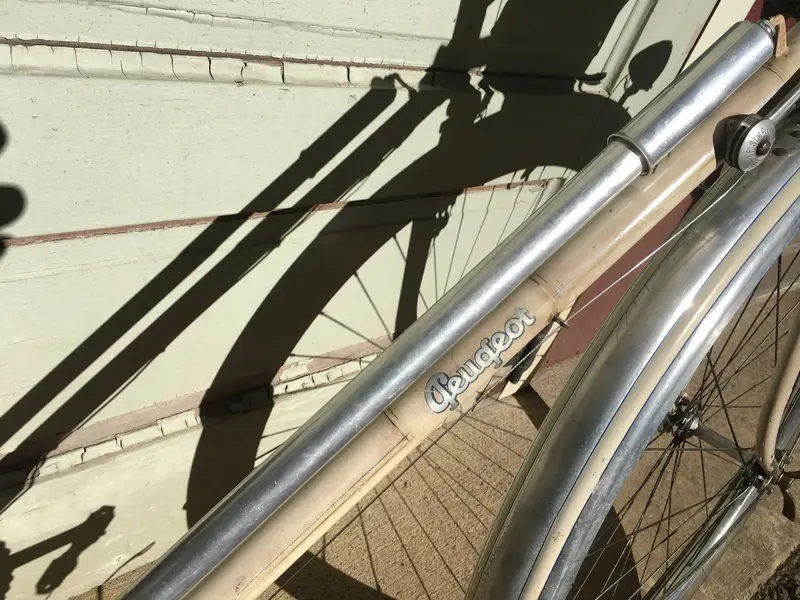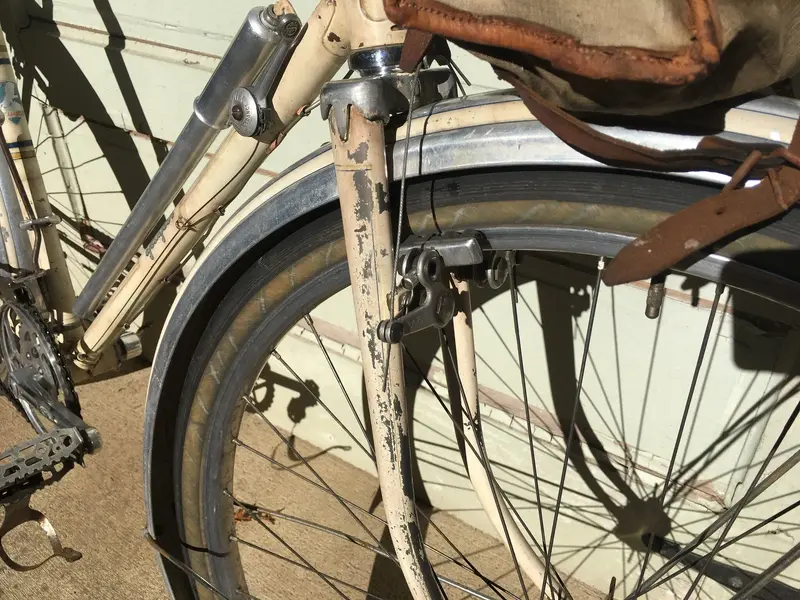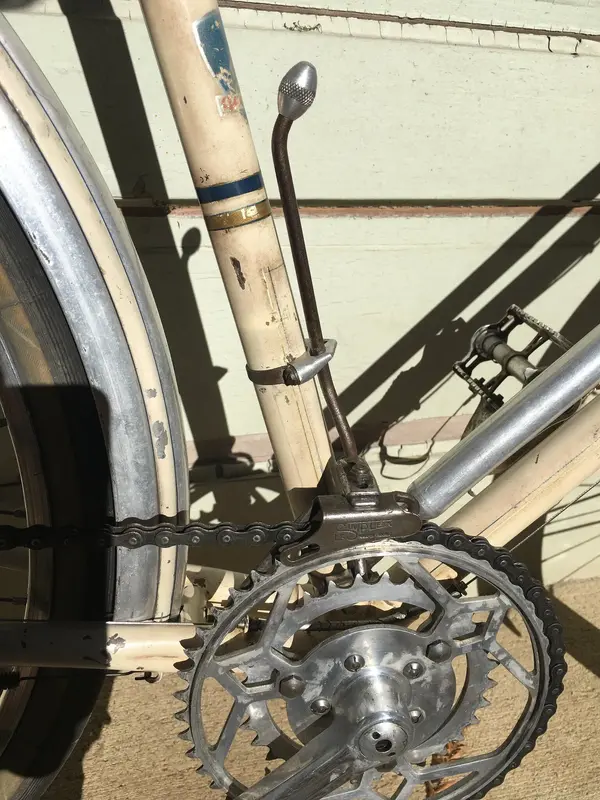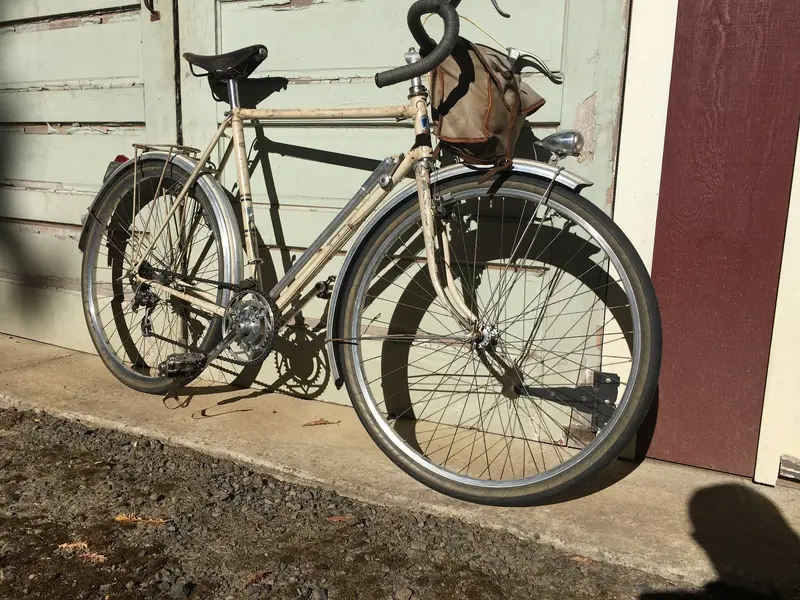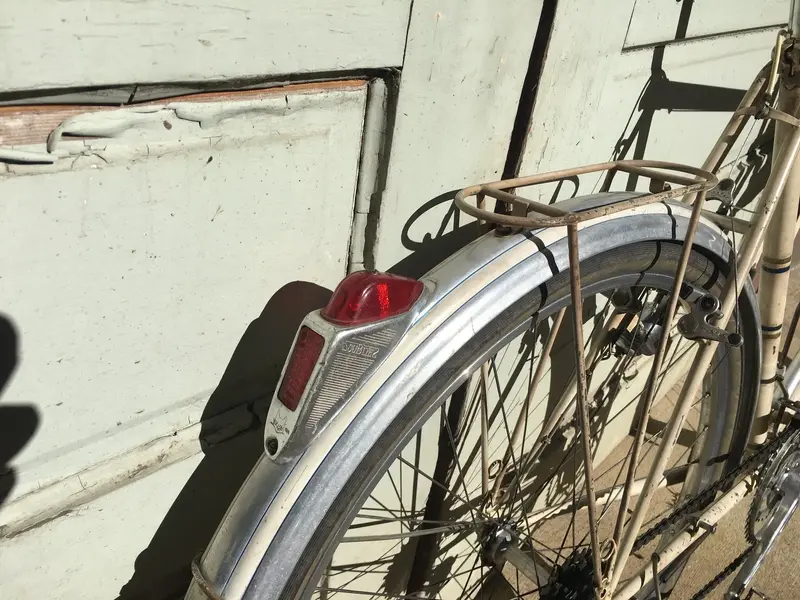TA pedals and cable guide. Reviewed and stripped. Translation below.
Guidgaine and pedals T. A.
Specialising in beautiful accessories for racers and touring cyclists, T.A. has completed the development of two items that contribute to the clean appearance of the bicycle and its performance.
The GUIDGAINE is a small T-shaped piece. The vertical leg ends in a hole for fixing under the expander head or handlebar clamping nut, as desired. The upper leg has a hole at both ends for a rubber ring. As the ring is slotted and the hole is open on the side, it is not necessary to dismantle the sleeves to fix them in this double guide, without clamping them or hindering their natural bend, the GUIDGAINE ensures a correct fit and perfect centring, while avoiding the sagging that is so detrimental to the life of flexible transmissions.
Remember that there are two types of GUIDGAINE: a very narrow one, for competition, and a wider one, which can be used as an identity plate, created especially for beautiful touring bikes.
TA pedals are much more expensive than any other pedals. Let's see why: Externally, we are looking at a beautiful, very mechanical, light metal, one-piece cage attached to the body by 4 chimney screws. No delicate openings; only 2 holes to fix the footrest; the extreme slightly raised spout, gives a good seat to the bulge of the sole and prevents the foot from hunting outwards.
A screwed cap in the centre of the pedal carries a grease nipple, which provides a much-needed opportunity for quick and easy lubrication; the nipple is easily accessible, but is perfectly protected by the cage's lip.
But, let's dismantle this pedal!
The axle, made of case-hardened steel, is robust and short. Two parts are ground after treatment; on the crank side, this surface will receive the main needle bearing, 12 m/m long.
At the other end, a ball bearing is supported against the stop formed by the difference in diameter of the shaft. These bearings are press-fitted into the pedal body, which is made of light metal die-cast.
On the crank side, the seal is provided by a felt gasket that fits into a mating recess in the needle bearing and is tightened by a cover that is screwed flush with the body.
The shaft is fixed by a nut clamping a washer against the central cage of the ball bearing. The final cap, carrying the grease nipple, is locked with a spigot spanner that hooks into a small notch.
The only part of the pedal that can wear out is the one in contact with the sole: this cage is removable and easily replaceable. It is made of a strip of dural cut, drilled and shaped. We note that it is fixed by 4 chimney screws of the same type as those used on the chainrings, and that the chimney heads are embedded in the thickness of the cage.
The foot strap does not have to be passed through a buttonhole; it is wedged behind the head of the cage fixing screw, does not move, and does not wear out, because it works against a wide surface of 8 m/m.
We believe we have given you all the reasons why T.A. pedals are so expensive.
High-strength steel axle, precision bearings in a truly sealed housing, easy lubrication under pressure, low weight and stainless steel body (light metal), one-piece cage giving a good bearing surface and immediately replaceable after wear.
Enough to satisfy the most demanding users!
